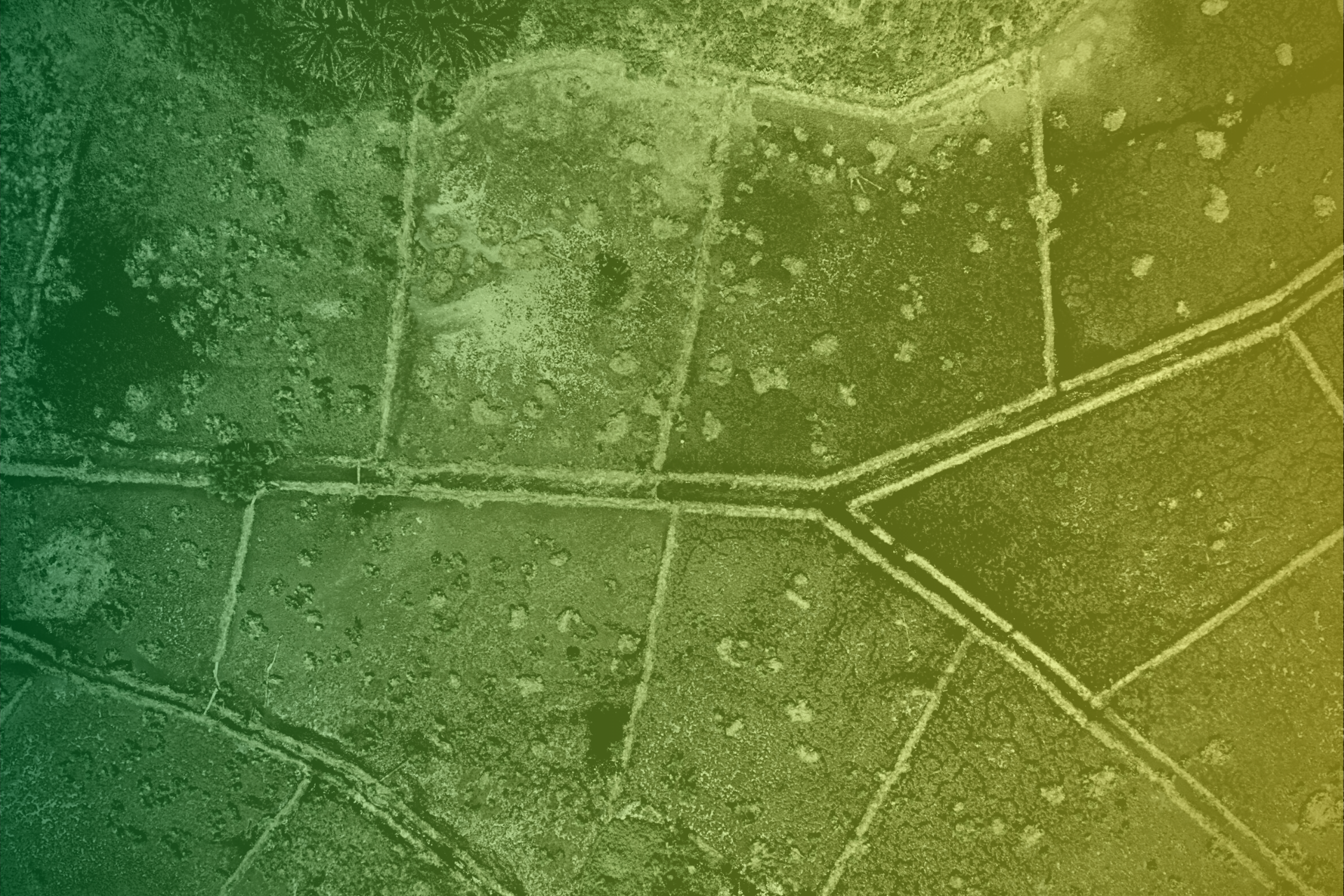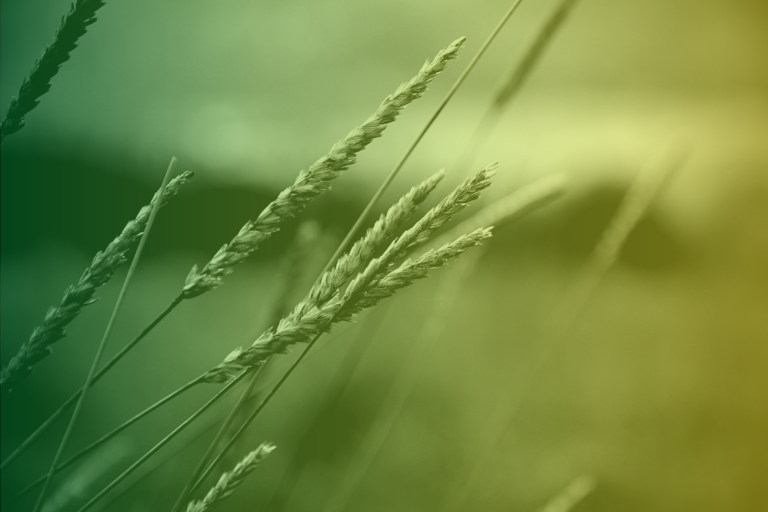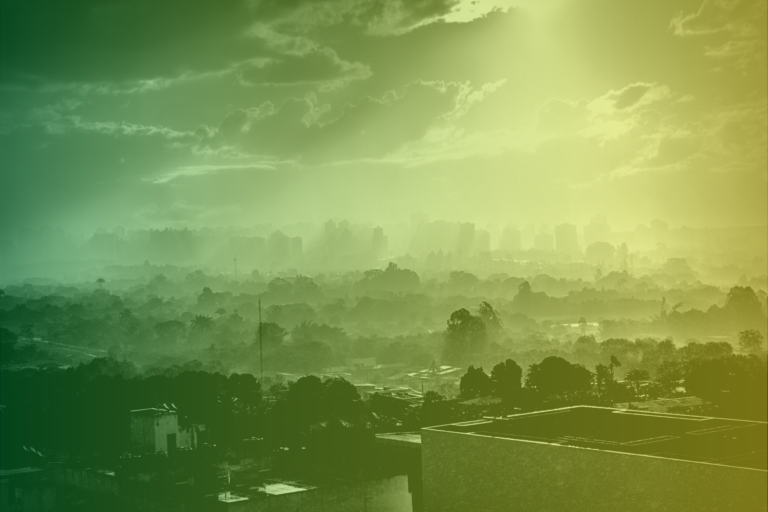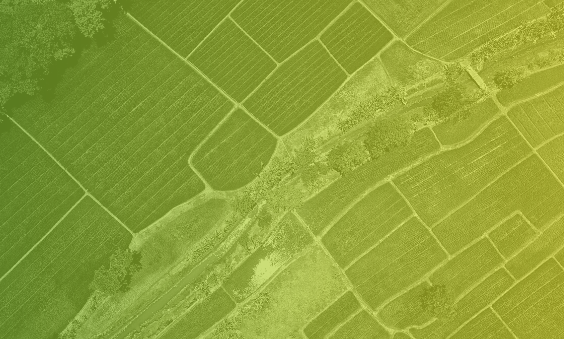Industrial Animal Agriculture’s Large Footprint on Global Land
How are we going to feed a population of 9 billion people by 2050? This question has been asked many times by a variety of experts and remains one of the most pressing quandaries of our time. Earth’s current population is around 7.9 billion, however recent reports show that our current food system can only feed 3.4 billion people sustainably – or without exceeding key planetary limits. As it stands, our global food system is built around industrial animal agriculture, and the impact of prioritizing animal-based meat, dairy, eggs, seafood, and more takes a major toll on the planet.
The problem with focusing on protein
Our global appetite for animal-based foods is astounding: According to the UN FAO, meat production has more than tripled and dairy production has doubled in the past 50 years. As a recent report from the International Panel of Experts on Sustainable Food Systems (IPES-FOOD), “The Politics of Protein,” explains, “For decades, the perceived need for more protein has led to distractions and distortions in development programs, flawed marketing and nutritional campaigns, and calls to increase the production and trade of meat, dairy, and protein-enriched foods.”
The average American now consumes roughly twice the recommended amount of protein and the global narrative around meeting protein needs is misguided in that populations suffering from lack of food access require a variety of foods and nutrients to meet their needs, not solely protein. Despite the enormous amount of resources expended to produce large amounts of meat, dairy, eggs, and other animal-based foods, the FAO states, “despite undeniable progress in reducing rates of undernourishment and improving levels of nutrition and health, almost 800 million people are chronically hungry and 2 billion suffer micronutrient deficiencies.” Further, “Under a ‘business-as-usual’ scenario, without additional efforts to promote pro-poor development, some 653 million people would still be undernourished in 2030. Even where poverty has been reduced, pervasive inequalities remain, hindering poverty eradication.”
While we are producing an excess of protein, we are failing to produce enough food to feed the world’s growing population in a way that is equitable. In every sense, our global food system is unsustainable and failures–or “maladaptations” per a recent IPCC report–will only further the damaging impact of our current food system and ultimately make it harder to grow food with rapidly advancing climate change. Examining the impact that industrial animal agriculture has on the environment further illustrates the need to fundamentally redirect the focus of our global food system towards promoting plant-based diets and prioritizing growing food for direct human consumption.
The enormous land footprint of animal agriculture
When it comes to environmental impacts, industrial animal agriculture is an insatiable business that consumes far more than it produces. Our current food system is responsible for around 30% of global greenhouse gas emissions and industrial animal agriculture is responsible for 57% of those emissions. Producing animal-based meat, dairy, and eggs, consumes one-third of the world’s freshwater stores and occupies a majority of the world’s land resources.
Specifically, agriculture occupies 51% of Earth’s habitable land and of that, livestock occupies 77% of global agricultural land with only 23% dedicated broadly to crops. Despite taking up nearly 80% of agricultural land, industrial animal agriculture produces less than 20% of the world’s supply of calories. In fact, 83% of the world’s calories and 63% of protein actually comes directly from plant-based foods.
Deforestation and land clearing to make way for more animal-based foods
Growing more food often means using more land which, unfortunately, is the modus operandi for industrial animal ag producers. According to a report in National Geographic, globally an area roughly the size of South America has been cleared to make room for crops to grow livestock feed. Biodiversity hot spots like the Amazon rainforest have been hardest hit by the expansion of industrial animal agriculture. As land is cleared to make way for grazing cattle, followed closely by industrial soy production to meet the growing demand for livestock feed.
“As pasture frontiers march onward, so does soy, expanding from areas of traditional cultivation.” states a report from Mongabay citing a report published in Journal Nature. “In Argentina, soy is moving south into the Chaco. In Paraguay, soy farms threaten the Atlantic Forest. Soy is also replacing the Chiquitania forest of Bolivia and the Campos grasslands in Uruguay.” Around 77% of global soy is fed to livestock for meat and dairy production with only a small 7% going to direct human consumption.
Research shows that as affluence increases globally, demand for meat and dairy products increases. The UN FAO estimates, “growth in global consumption of meat proteins over the next decade is projected to increase by 14% by 2030.” While there is some evidence that rising awareness of the health and planetary impacts of industrial animal agriculture is lowering rates of consumption in a small sector of nations such as New Zealand, Canada, and Switzerland, the reality remains that wealthy nations in the global north contribute the most to environmental degradation and climate change while the world’s poorest face the largest impacts.
Land clearing leads to biodiversity loss
Deforestation in areas like the Brazilian Amazon rainforest is linked to biodiversity loss and is driving species extinction. A 2021 report found that 1,470 jaguars in Brazil’s Amazon rainforest were killed or displaced between 2016 to 2019 due to deforestation and accompanying wildfires. This is particularly significant considering roughly 90% of the world’s jaguar population lives in the Amazon and facing mounting threats related to deforestation. Being an apex predator, jaguars have an enormous impact on the health of the ecosystems they live in and effectively work to shape the landscape. Another report found that deforestation for cattle ranching in Nicaragua has a direct impact on local watersheds, citing increased soil erosion that has negative downstream impacts on fish species leading to biodiversity loss.
This is just one example of how land clearing to make way for cattle grazing and growing monocultures for livestock feed impacts biodiversity loss. According to a report from Chatham House, “Our global food system is the primary driver of biodiversity loss, with agriculture alone being the identified threat to 24,000 of the 28,000 (86%) species at risk of extinction. The global rate of species extinction today is higher than the average rate over the past 10 million years.” Many scientists believe we are in the midst of the sixth mass extinction of species and unless we address the impacts of a food system centered on industrial animal agriculture, the rates of biodiversity loss only stand to grow.
Opportunity for Plant-Based Diets and Foods
Industrial animal agriculture’s land footprint is immense, with far sweeping implications. Only around 55% of crop calories grown worldwide go to feed humans directly. A whopping 36% go to livestock feed and 9% are used for biofuels and other industrial applications. Shifting toward plant-based diets can not only play a role in curtailing emissions, but it can also re-allocate crops to feed people instead of livestock, alleviate growing resource inequities, and eliminate the suffering of animals in factory farms.
According to a 2021 report from Our World in Data, “If everyone shifted to a plant-based diet we would reduce global land use for agriculture by 75%.” In general, it takes around 100 times more land to produce animal-based meats than it does to produce plant-based alternatives.
Plant-based diets are the most efficient way to feed the world: For every 100 calories of human-edible crops that we feed to animals, we only get 17-30 calories back in the form of meat or milk. Using arable land to grow sustainable crops for human consumption rather than animal feed will be a significant step towards addressing food security.
Potential for healing the land
With a lower land footprint, a plant-based food system opens up the potential for healing some of the damage to the environment wrought by industrial animal agriculture.
One major argument for continuing business as usual and carrying on with expanding industrial animal agriculture is the fact that grazing lands make use of land that is otherwise unsuitable for growing crops – thus, it can be productive in producing food by being used for pasture. However, if agricultural land is used more efficiently to grow plant-based foods for direct human consumption, there is a growing body of research showing that allowing land to rewild has manifold benefits for reducing climate change.
Rewilding land, effectively eliminating all agricultural use and allowing it to grow freely, has been proven as an effective measure to restore biodiversity and also enable the land to serve as a carbon sink. A study published in the journal Nature states, “restoring 15% of converted lands in priority areas could avoid 60% of expected extinctions while sequestering 299 gigatonnes of CO2—30% of the total CO2 increase in the atmosphere since the Industrial Revolution.”
By prioritizing growing crops for direct human consumption, there is enormous potential to free up land that is currently being used for livestock grazing and crop production. If just 15% of that land could be rewilded, the potential positive impact on biodiversity, greenhouse gas emissions, and overall ecosystem health is staggering.
Further, according to a report in New Scientists, shifts in what we grow and how we grow it could allow for growing enough food for 10 billion people without exceeding planetary limits. Strategies include “rewilding farms in areas where more than 5 percent of species are threatened; reforesting farmland where more than 85 percent of tropical forest has been cut down; reducing water withdrawal for irrigation and other purposes where too much is taken; and decreasing nitrogen fertilization where levels in surface water are too high.”
Report authors claim that these changes alone would enable the sustainable production of food for 7.8 billion people while “reductions in food waste and a shift away from eating meat could increase this to 10.2 billion – slightly more than the projected 2050 world population.”
Working toward a plant-based food system
Industrial animal agriculture is deeply ingrained in our global world but there is still ample room for hope. Through our work with the Institute, we aim to drive transition to a plant-based food system by taking a holistic approach that recognizes the complexity of the challenges we face, builds bridges across sectors, and ensures businesses can thrive.
“Our goal is to build a strategy through a social justice lens that engages and elevates diverse stakeholders, especially BIMPOC farmers and those along the supply network, and considers the impact of our work on people, planet, and animals,” said Sabina Vyas, Senior Director of Impact Strategies for PBFA and The Institute. “As we look for solutions that can ensure a sustainable food future for our global population, we are committed to honoring ancestral and indigenous practices while also looking to innovative technologies and solutions that allow us to restore and respect the land.”
For more information on the Institute and our work, be sure to subscribe to our newsletter and follow us on social media @pbfinstitute.






